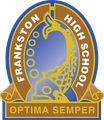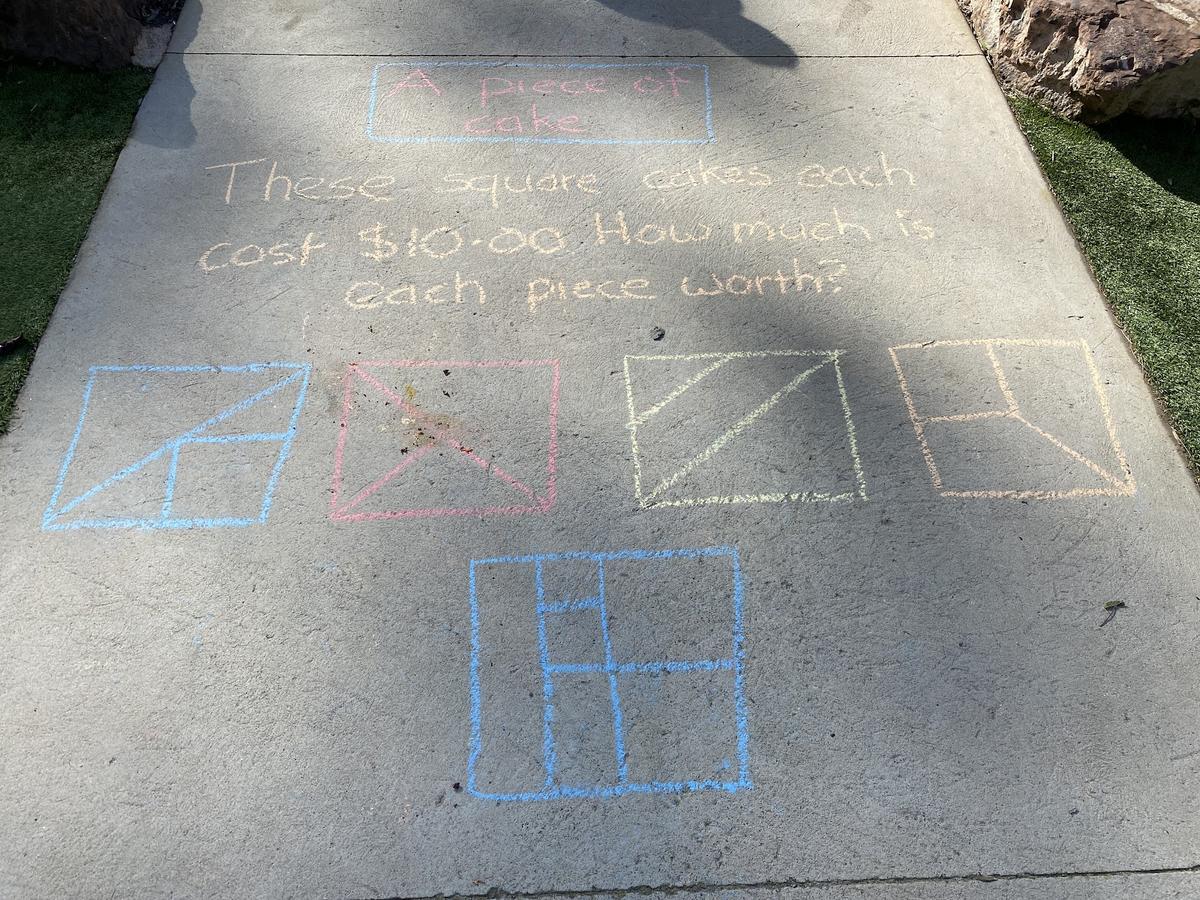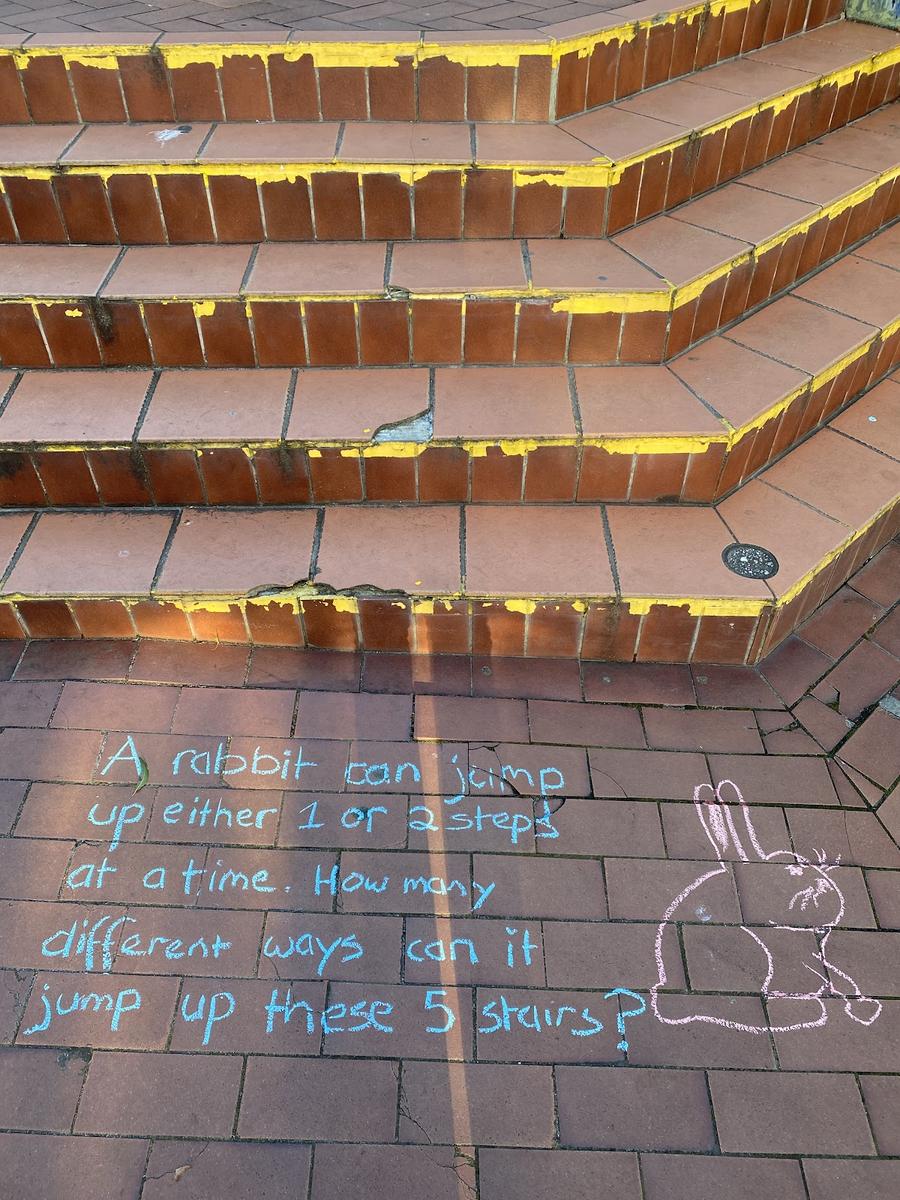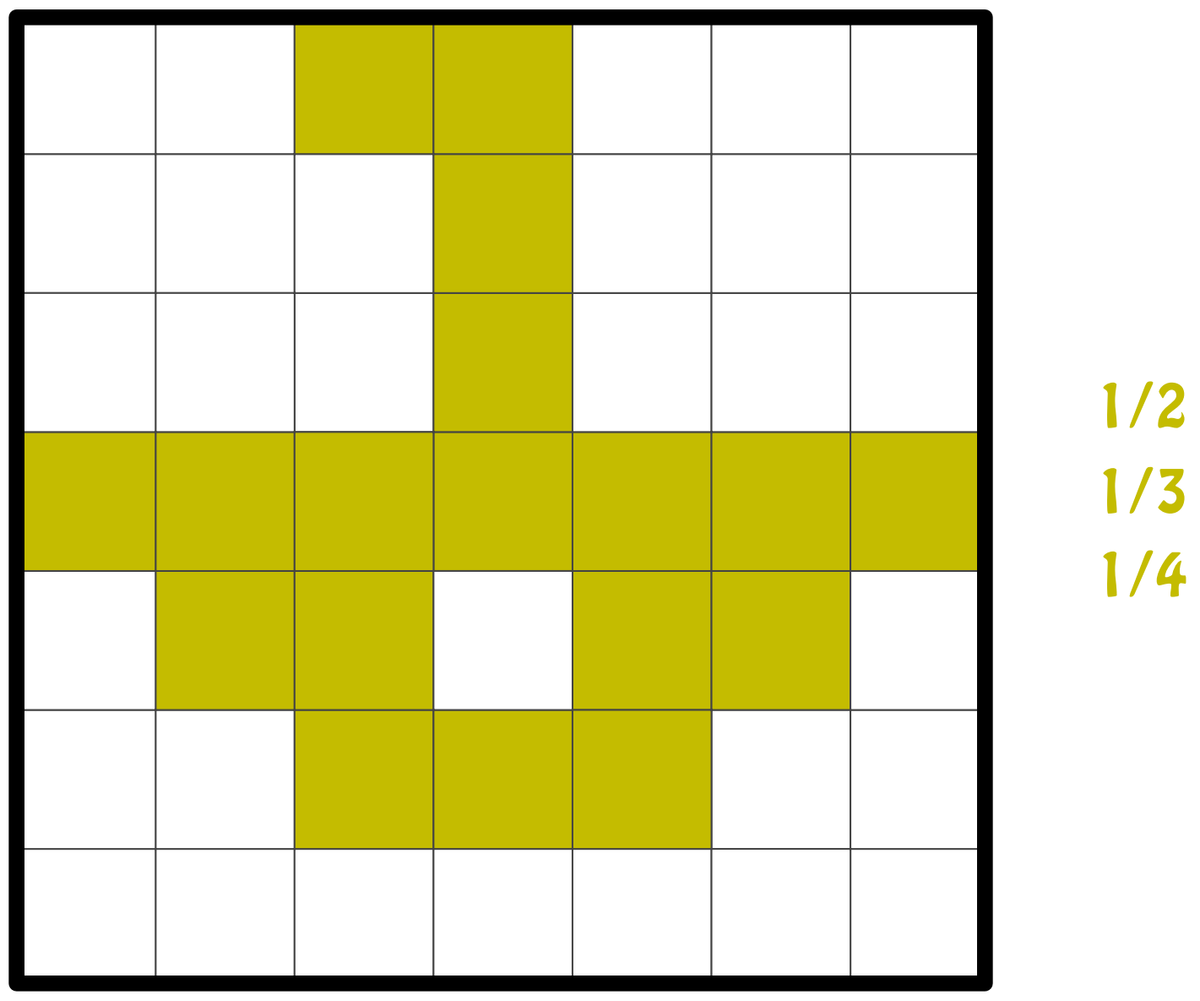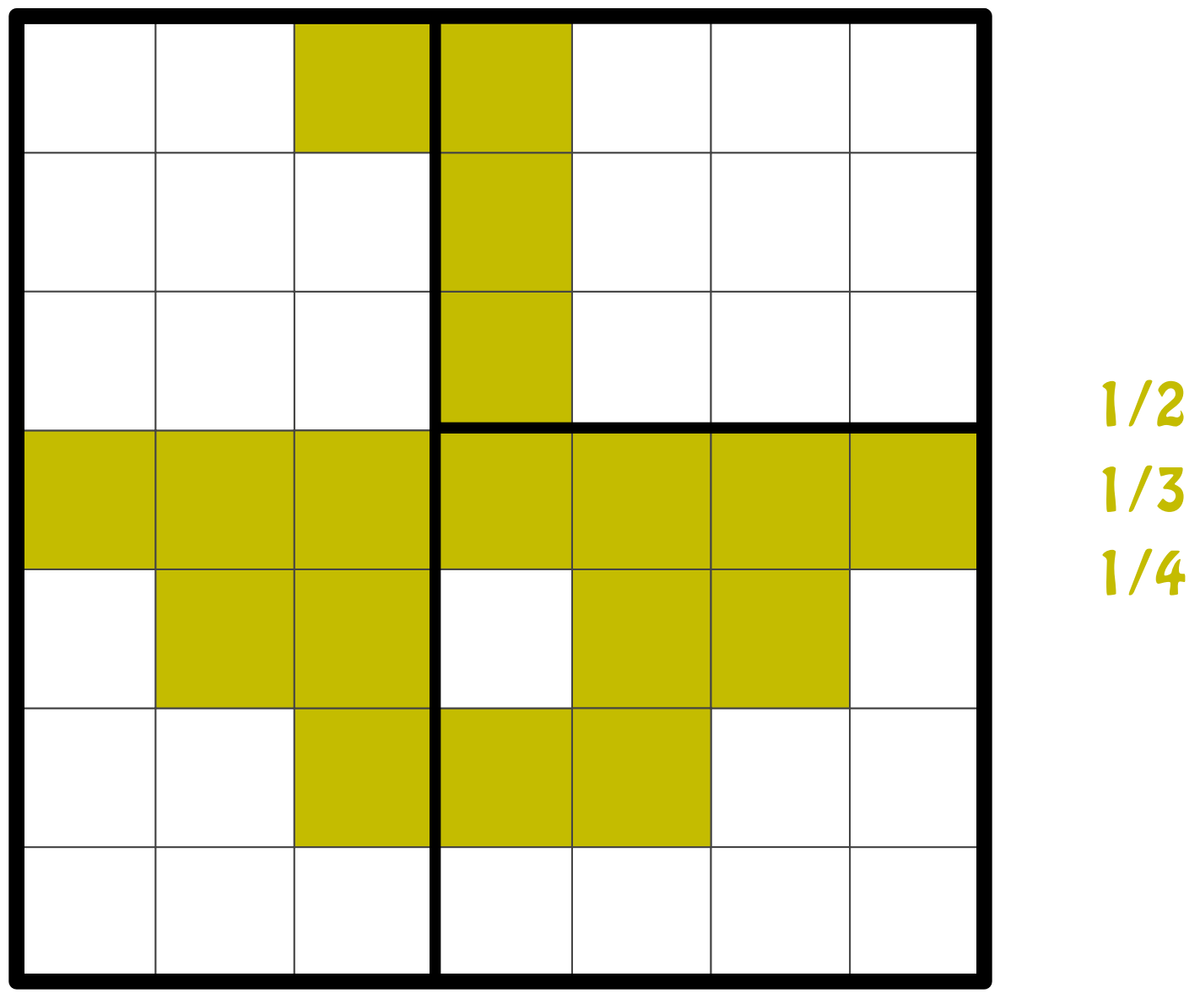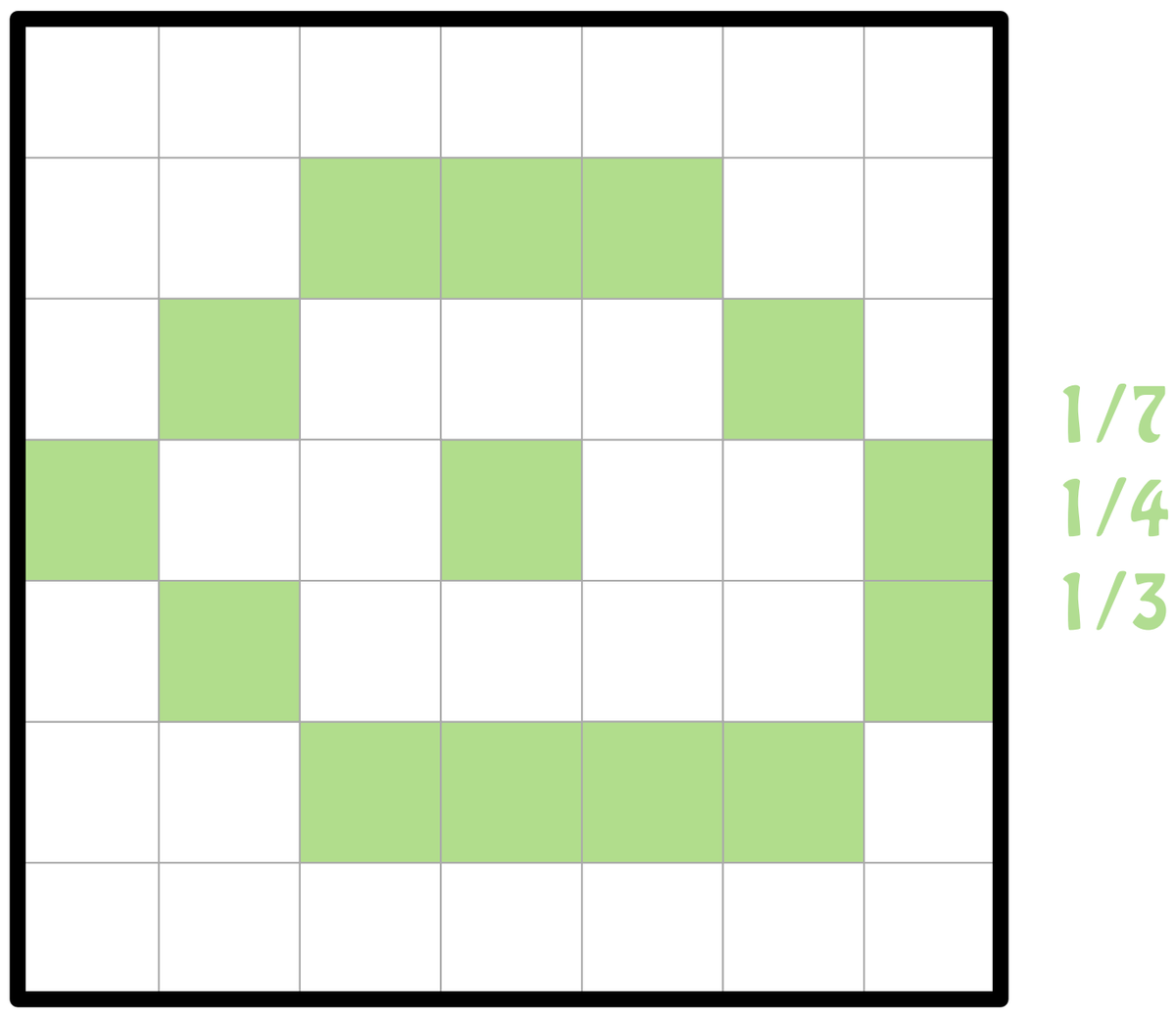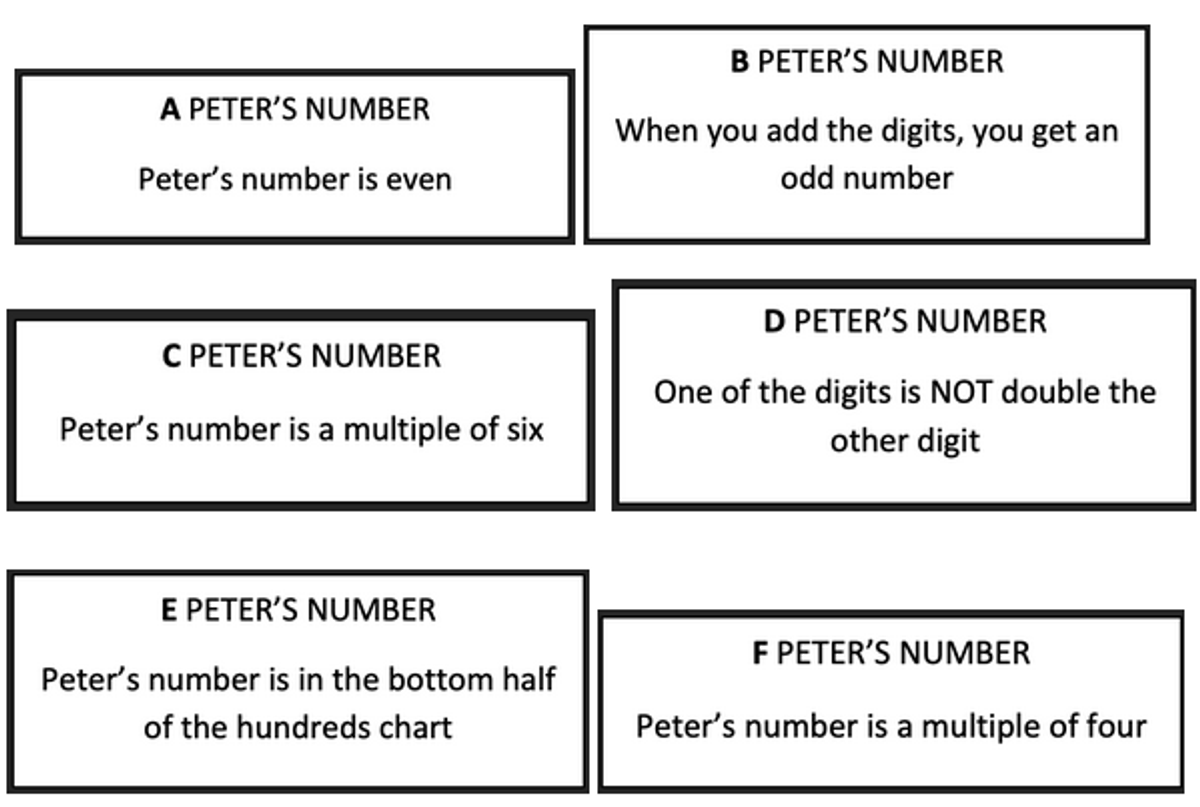Tutoring Program

Throughout 2021 a number of students have been involved in the Frankston High School Tutoring Program for both Literacy and Numeracy. In each newsletter, we aim to share some of the amazing work from our students, along with some of the fun and exciting ideas coming from the Tutoring Team.
Mathwalks
When back to on site learning, why not come past the STEM Mezzanine building?
Every Thursday and Friday there will be an interesting problem drawn on the pavement to wet your appetite and get your brain ticking over. Check out some of these images and see if you can figure them out...
Fractured Fractions
We’re loving these puzzles at the moment. The aim is to look at the image provided (see Image 1) and separate it into three different rectangular sections, where one section has 1/2 shaded, another section has 1/3 shaded, and the last section has 1/4 shaded (see fractions to the side of the image). One of the solutions can be seen in image 2, but there are more! Can you find it/them?
Otherwise, why not attempt to separate Image 3 into three rectangular sections, with 1/7, 1/4 and 1/3 shaded respectively. Images sourced from Math Pickle
Forming Groups
How do we form cooperative learning groups in the Tutoring Program?
A new semester has seen a number of new students being introduced into the Numeracy Tutoring program. When we first meet, our students often come from more than one class and do not know each other. Our first aim is to foster a sense of belonging to this new group and we might do this by using inclusive language like “we”, “us” and “our”. Then we want to get down to the business of students working together to maximise their own and each other’s learning.
A common problem during small group sessions is that instead of all students being actively involved, there can be one confident student working on the problem, while the rest of the group is passively watching. We want all students to feel confident, to have a voice and be a risk taker.
One approach we tried this week was using a 'Pieces of the Puzzle Approach'. This is a deductive reasoning activity in which each group member is given a piece of information to share with the rest of the group. The mathematical solution cannot be found without everyone's contribution. Thus, an important aspect of the approach is that the group assumes 'ownership' of the task yet individuals retain personal responsibility within the group and no one is successful until all group members are successful.
Instructions:
• We are working as a group
• Each of us has a card that contains one clue to solving a problem called Peter’s Number
• There are six clue cards labelled A-F
• Each member of our group needs to read their clue to help solve the group’s problem, but they must not show their card to anyone
• What is Peter’s Number?
We found that using this approach the students were more likely to:
- Take risks – the student who didn’t know anyone else and who was probably feeling shy, found her voice and read out her card. This resulted in students being more likely to ask questions of each other and put forward ideas in a small group situation.
- Develop Mathematical language - One student, Ollie interpreted the mathematical vocabulary and explained to the group that his card needed all the numbers in the four times table.
- Coach their peers – Angelina suggested to her group that they write their ideas down on the white board and test out their collective ideas.
From the teacher’s point of view, we were free to observe how our new students interact, learn about their personalities and assess student’s confidence, language and strategies. We have given our group their independence and every student has been able to make a contribution to the problem-solving process. Hopefully each student left feeling a little buzz of excitement having been a valuable member of a team.
‘Forming Groups’ piece written by Ms Sarah Weeks - Numeracy Tutor
For more information seeJigsaw (teaching technique) - Wikipedia
